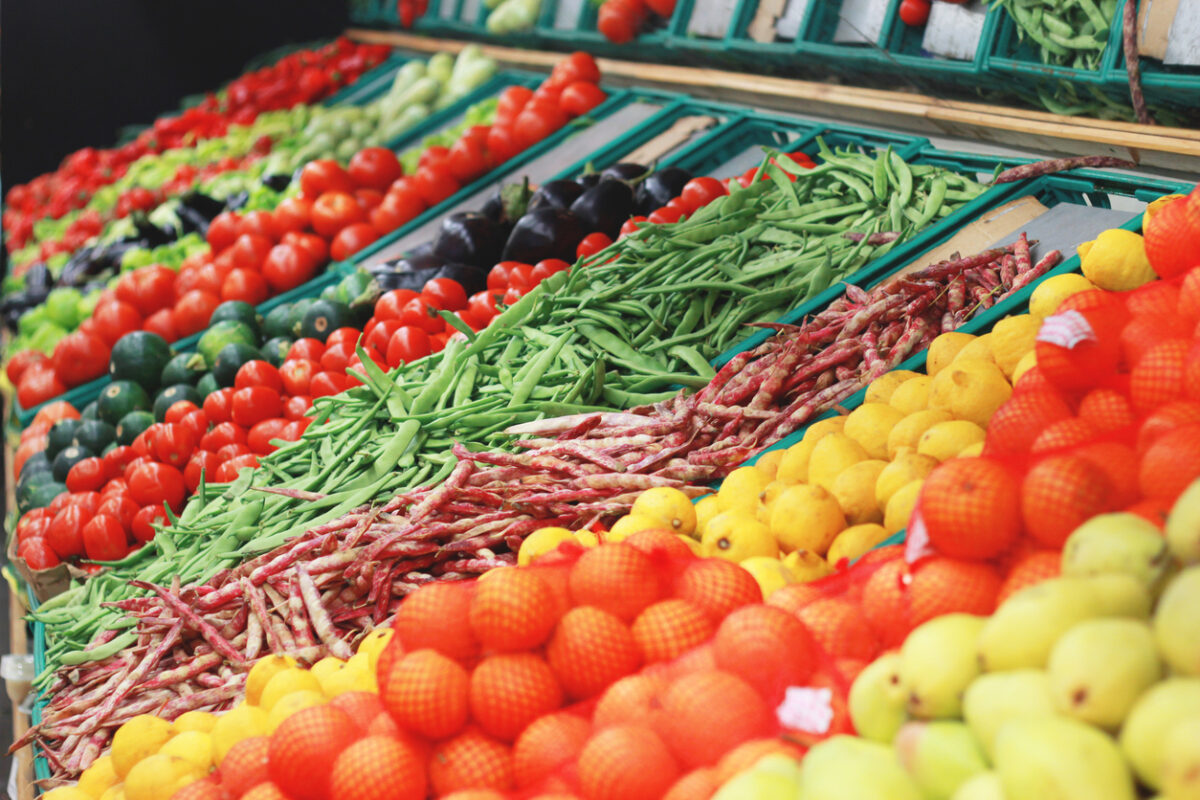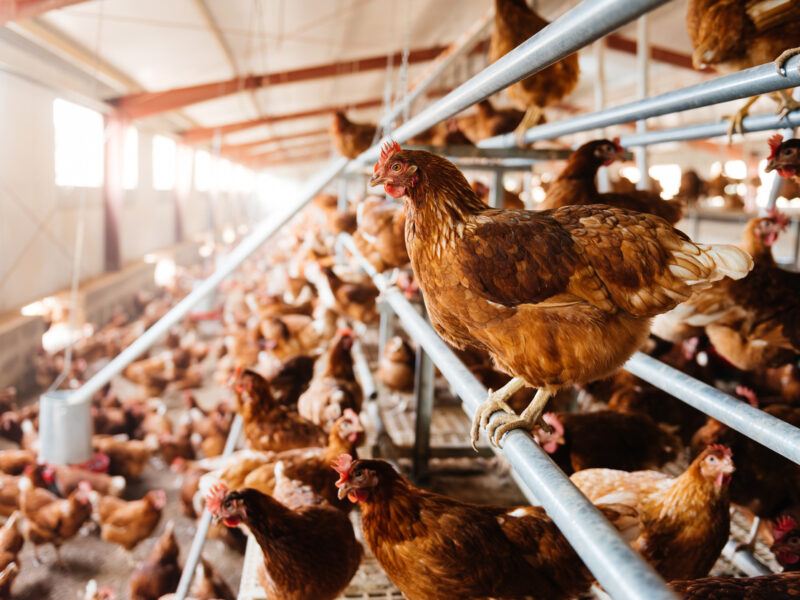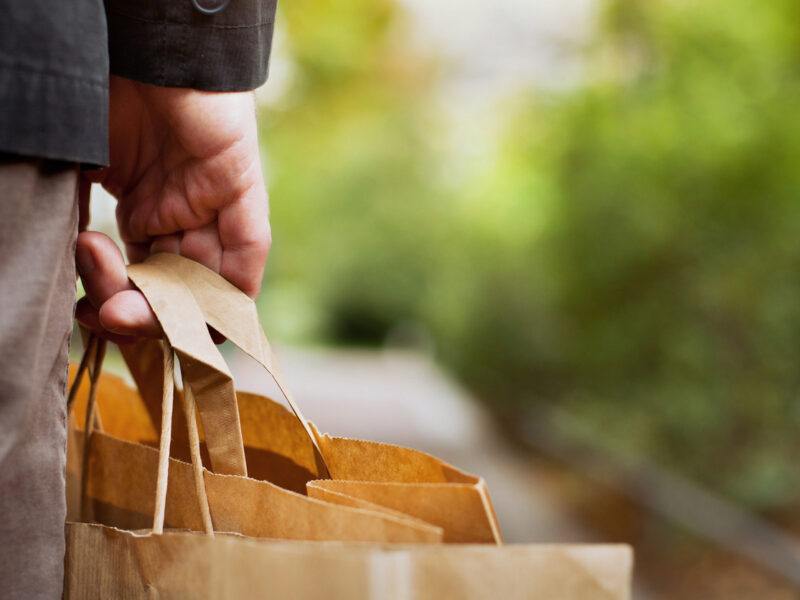Overview:
-Tariff-driven food price increases could be exacerbated by price gouging and proposed cuts to federal SNAP benefits.
-The impact of tariffs is expected to hit lower-income households the hardest.
-"The point is chaos," food policy analyst tells Planet Detroit.
Michiganders could soon be paying more for groceries as President Donald Trump’s tariffs come into effect, with price hikes affecting low-income residents the most.
Trump issued sweeping tariffs, or taxes on imports, on April 3, although many steep hikes on imports were later paused.
A 10% tariff remains for many countries. And China is still subject to 145% tariffs, while both Canada and Mexico have 25% tariffs, according to Supply Chain Dive. Other nations have leveled retaliatory tariffs in return, like China’s 125% tax on U.S. goods.
The Yale Budget Lab estimates these tariffs will cause food prices to rise 2.8% in the long run, with the cost of fresh produce increasing by 3.6%.
The impact of tariffs across all product categories will hit lower-income households the hardest. Those in the bottom 10% to 20% of earners will experience a 5.1% decline in disposable income, while those in the top 10% are hit with a 2.1% drop, according to the Yale estimates.
Tariffs are likely to raise retail prices on imported foods like coffee and bananas. Some fear these increases could be exacerbated by price gouging and proposed cuts to the federal Supplemental Nutrition Assistance Program, or SNAP. There’s also widespread concern that retaliatory tariffs from other nations could hurt U.S. farmers, many of whom grow primarily for the export market.
Experts say the ongoing changes to tariffs make it hard to predict how they will impact grocery shoppers as well as food companies and farmers trying to make decisions for their businesses.
“The point is chaos,” Rebecca Wolf, senior food policy analyst for the nonprofit Food and Water Watch, told Planet Detroit. Trump’s tariff policy wasn’t designed to strengthen American markets, but to punish countries like Mexico and Canada over topics like immigration policy, she said.
Which foods are likely to become more expensive?
Tariffs are likely to have a major impact on products that aren’t generally produced domestically and lack protection from trade deals like the United States-Mexico-Canada Agreement, according to David Ortega, a food economist and professor at Michigan State University. He added that it may take a month or so before prices are affected.
“These tariffs have to be in place for a significant period of time … before you really start to see the effects, and you’re going to see the effects primarily on perishable products,” he said.
Coffee, bananas, olive oil, palm oil, imported cheese, and alcohol are among the products that could see price hikes, Ortega said.
Import tariffs could also raise prices on some items with significant domestic production like orange juice and beef because the U.S. receives significant quantities of both from Brazil and Australia, respectively.
The United States-Mexico-Canada Agreement will protect some imports from tariffs, according to the White House. This is significant because in 2023 roughly 63% of U.S. vegetable imports and 47% of fruit and nut imports came from Mexico, according to the U.S. Department of Agriculture. The U.S. imported $40.5 billion in agricultural goods from Canada in 2023, with baked goods, canola oil, and beef among the top imports, according to U.S. and Canadian data.
Ortega said importers need to verify elements like a product’s country of origin to ensure it’s covered by the USMCA. In the absence of tariffs, importers didn’t have much incentive to pursue this verification, and many will now need to adjust, he said.
MORE REPORTING FROM PLANET DETROIT
Detroit community fridges highlight mutual aid efforts around food insecurity, waste: ‘We’re scrappy’
Community fridges, popularized during the COVID pandemic to address surges in food costs, are a mainstay in a handful of Detroit neighborhoods, with room for expansion into more parts of the city.
As bird flu wreaks havoc in the Midwest, researchers say vaccines offer a way out
Since April 2024, the U.S. has reported 70 human cases of H5 bird flu, primarily impacting agricultural workers. Experts stress that vaccinating poultry is essential to control H5 and alleviate the burden on farmers and consumers.
Paper or plastic? Local grocers embrace shift away from plastic bags
Several metro Detroit grocery stores, including Western Market and Detroit People’s Food Co-op, are opting for paper bags in the name of environmental sustainability.
Price gouging, food aid cuts may add to tariff pain
The broad nature of Trump’s tariffs, which have been applied to roughly 90 nations, mean food companies may be unable to source products from cheaper sources, according to Food and Water Watch’s Wolf. She also expressed concern that large food companies could use the excuse of tariffs to hike prices beyond what is needed and grow their profits.
Wolf named the bird flu’s impact on egg prices as an example of how supply chain disruption can lead to price gouging. A Food and Water Watch report found that monthly egg production in 2022 declined by no more than 5.6%. Yet average prices jumped 150%, from $1.93 per dozen in January 2022 to $4.82 in January 2023.
“It’s very clear that in a highly consolidated marketplace, where there are disruptions in this fragile supply chain, that big food corporations will take advantage of the opportunity to price gouge,” Wolf said.
Low-income households are likely to bear an outsize portion of the impact from price hikes, said MSU’s Ortega, which could be compounded by economic headwinds in Michigan and cuts to government assistance.
“This really impacts low-income households the most,” Ortega said. “On the food side that’s especially true, because lower-income households spend a significantly higher share of their disposable income on food.”
Michiganders may also be especially vulnerable to a trade war. Twenty percent of the state’s economy is tied to the auto industry, which relies on parts and vehicles from Canada and Mexico, the Wall Street Journal reports.
House Republicans are proposing cuts to food and health care programs that could increase the strain on low-income people. This includes a proposed $230 billion cut to the USDA budget. Most of this is likely to come from the SNAP program, which helps low-income households supplement their grocery budget.
Tariffs ‘messing with farmers’ bottom line’
Commodity growers, who produce crops like corn and soy for the export market, could be hit hard by retaliatory tariffs, and the timing could be especially harmful.
“We are in April and a lot of the pre-planning, pre-seeding that needs to go into all types of production, particularly commodity production, has already happened,” Wolf said. In other words, farmers have likely committed to the production of crops for export they may be unable to sell.
Tariffs on agricultural inputs like fertilizer and steel used in farm equipment could add to farmers’ costs and potentially contribute to higher food prices. Canadian imports of potash, a critically important source of potassium, will still be subject to a 10% tariff. Time reports that Canada supplies 80% of the potash used in the U.S.
Tariffs in Trump’s first term led to a $32 billion farm bailout in 2020 and Agriculture Secretary Brooke Rollins has suggested another bailout could be on the way.
Wolf said tariffs could be used to encourage farmers to transition from growing commodity crops for export and instead grow fruit and vegetables for the domestic market.
Such a transition would take time and require changes to domestic farm policy, including education for growers, recruitment of new workers, and a willingness to break up food company monopolies to ensure farmers get a fair price, she said.
In contrast, Wolf said the tariffs amount to Trump “messing with farmer’s bottom line” and potentially driving farms out of business.
“What we don’t want to see is the small, medium-sized farms that are still trying to stay afloat in these really tough marketplaces have to close down and then be bought out by even bigger entities.”





